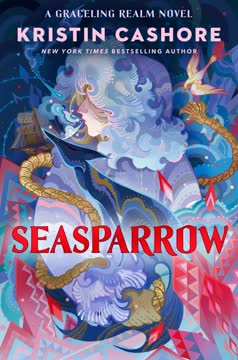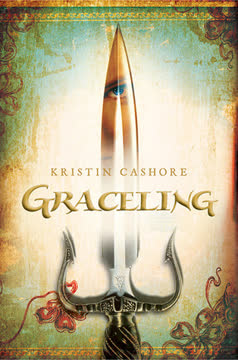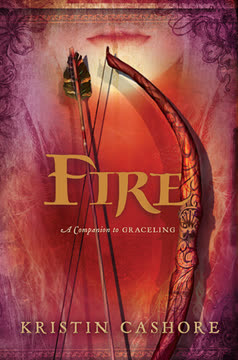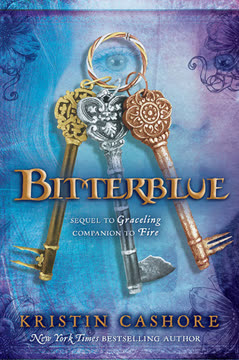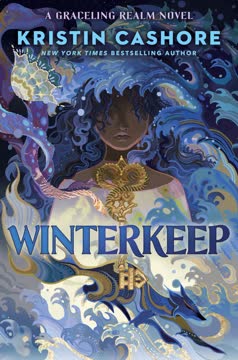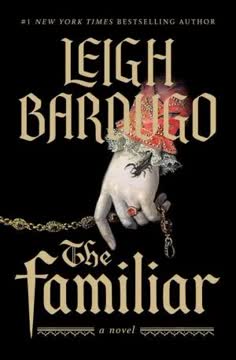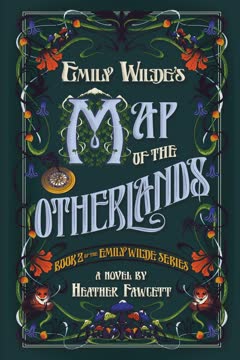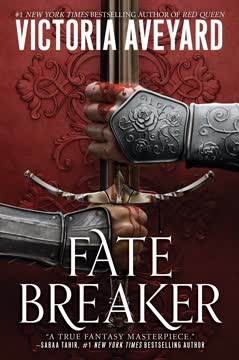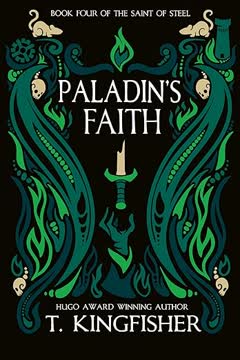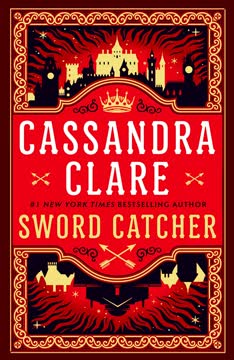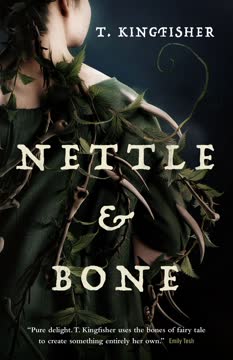Plot Summary
Ship of Secrets Sails
Hava, a spy with the Grace to become unseen, sails home from Winterkeep on the Monsea, a ship full of secrets and divided loyalties. She watches over her half-sister, Queen Bitterblue, and a crew of sailors and courtiers, each with their own burdens. Hava's Grace lets her blend in, but she is always alert, always listening, always alone. The ship is both a haven and a prison, a place where Hava's past and present collide. As the sea churns and the cold deepens, Hava's vigilance grows—she is haunted by memories of her mother, her monstrous father, and the knowledge that danger is never far from the queen. The journey is more than a return; it is a test of trust, identity, and the cost of survival.
Icebound and Unseen
Life at sea is a study in contrasts: the thrill of the wind and the monotony of routine, the warmth of camaraderie and the chill of distrust. Hava's days are spent translating dangerous formulas, her nights hiding from the gaze of others. The cold is relentless, and so is the hunger—for food, for answers, for belonging. The ship's crew is a patchwork of nations and secrets, and Hava's Grace is both shield and barrier. She senses the tension between Bitterblue and Giddon, the unspoken histories of the sailors, and the ever-present threat of betrayal. As ice closes in, Hava's loneliness sharpens, and her need to protect the queen becomes an anchor she cannot release.
The Language of Survival
Hava's world is built on language—codes, translations, and the silent grammar of pain. She navigates the ship's social currents, learning from sailors and watching for signs of danger. Her Grace lets her eavesdrop, but it also isolates her. She is haunted by her mother's sculptures, each a testament to transformation and endurance. The formulas she translates are a puzzle she cannot solve alone, and she is forced to consider trust—can she risk asking for help? The ship is a microcosm of the world's cruelties and kindnesses, and Hava's survival depends on her ability to read both.
Climbing Toward Courage
Hava's desire to climb the ship's rigging becomes a metaphor for her struggle to rise above her past. With the help of the Keepish sailors, she learns the ropes—literally and figuratively. Each ascent is a battle with her own vulnerability, and each descent a lesson in humility. The camaraderie of the crew is both a comfort and a challenge, as Hava must decide how much of herself to reveal. The climb is not just physical; it is an act of defiance against the forces that have kept her hidden and afraid. In the rigging, she finds a fleeting sense of freedom, but the dangers below are never far away.
Storms and Shipwreck
The Monsea is caught between storms, and the crew's confidence is tested to the breaking point. Hava's careful routines are upended as the ship is battered by wind and ice. When disaster strikes and the ship is wrecked on a northern ice plain, survival becomes the only goal. The group is forced into lifeboats, then onto the ice, where hunger, cold, and fear strip away all pretense. Old grievances resurface, and new alliances are forged in desperation. Hava's Grace is no longer a luxury but a tool for staying alive. The ship's loss is a wound that will not heal, and the journey across the ice is a crucible for every soul.
Hunger, Hope, and Hurt
The survivors trudge across a landscape of endless white, rationing food and hope. Hava becomes caretaker to a litter of blue fox kits, each a fragile life in a world of death. The group's unity is tested by exhaustion, frostbite, and the ever-present threat of bears. Old roles are upended—advisers become nurses, sailors become hunters, and Hava, always the outsider, finds herself at the center of a new, makeshift family. The pain of loss is everywhere, but so is the stubborn will to endure. In the darkness, small acts of kindness become lifelines.
Foxes, Formulas, and Fears
As the group navigates glaciers and tunnels, Hava's burden grows heavier. The blue fox Hope, once a victim, becomes a symbol of resilience—and a key to the dangerous knowledge Hava carries. The formulas for the zilfium weapon are both a prize and a curse, and Hava's fear of what they could unleash is matched only by her fear of being alone. Trust is a scarce commodity, and every decision is shadowed by the possibility of betrayal. The foxes, with their growing intelligence and independence, mirror Hava's own struggle to define herself outside the roles others have given her.
The Weight of Rescue
When the survivors are finally rescued by northern villagers, relief is tempered by exhaustion and grief. The return to civilization is disorienting—food, warmth, and safety feel like luxuries stolen from another life. Hava is haunted by the memory of those lost, and by the knowledge that survival has changed her in ways she cannot yet name. The group begins to fracture as each person seeks their own path home. Hava's connection to the foxes, especially Hope, deepens, even as she senses that the world she is returning to may not have a place for her.
Northward, Into the White
The trek south through Pikkia and the Dells is a slow return to color and life, but Hava's sense of self remains clouded. The group's unity dissolves as they reach familiar lands, and Hava is left to confront the emptiness that survival has left behind. The foxes, now scattered among friends, are a reminder of both loss and possibility. Hava's relationship with Linny, a sailor who has become her confidant, offers a fragile hope for connection. But the past is never far behind, and the question of what to do with the dangerous knowledge she carries looms ever larger.
The Breaking of Anger
Back in Monsea, Hava is confronted by the ghosts of her childhood—her mother's sculptures, her father's crimes, and the prison that now holds Kera, the woman who tried to kill her. The urge for revenge is strong, but Hava begins to see the cost of holding on to anger. Through conversations with Bitterblue, Linny, and even Kera herself, she learns that forgiveness is not absolution, but a way to break free from the past. The process is painful and incomplete, but it is a beginning.
The Shape of Forgiveness
Hava orchestrates Kera's release, choosing compassion over retribution. The act is both a gift and a burden, a way to honor the little girl she once was and the woman she is becoming. The foxes, especially Hope, become symbols of healing and change. Hava's relationship with Bitterblue is tested and renewed, as both sisters learn to accept the scars they carry. The world outside is full of threats—political intrigue, the specter of war, the lure of power—but Hava's focus shifts to the quieter work of building trust, both in herself and in others.
Homecoming and Unmooring
The return to court is both a triumph and a trial. Hava is celebrated as a survivor, but she feels more lost than ever. The routines of palace life are stifling, and the expectations of others weigh heavily. Bitterblue's marriage to Giddon, the changing laws of Monsea, and the ever-present threat of war force Hava to confront what she truly wants. The foxes, now part of the court's life, are a reminder that home is not a place, but a web of relationships and choices. Hava must decide whether to stay or to seek her own path.
Castles, Cages, and Choices
Hava's journey through the castle is a journey through memory—each corridor, each sculpture, each locked door a reminder of what she has lost and what she has survived. The prison below is a mirror of her own past, and the decision to free Kera is a declaration of her own agency. The foxes, with their growing independence, challenge Hava to let go, to trust that those she loves can find their own way. The world is full of cages, but also of keys.
The Chemistry of Change
The final pages of Linta's journal reveal that change—chemical, personal, political—is the heart of the world. Hava realizes that her own Grace, once a means of hiding, can be a tool for becoming. The foxes, the formulas, the friendships she has forged—all are in flux, all are unfinished. The world is not made of stone, but of shifting, combining, dissolving parts. Hava's journey is not toward a fixed identity, but toward the freedom to change.
The World We Build
Bitterblue's decisions about the zilfium weapon, the new marriage laws, and her own marriage to Giddon are acts of world-building. Hava sees that every choice shapes the future, and that honesty, mercy, and courage are as necessary as strength. The survivors of the Monsea are scattered, but their bonds endure. Hava's relationship with Linny deepens, and the possibility of a new life—at sea, in love, in hope—beckons. The world is dangerous, but it is also full of possibility.
Letting Go, Setting Sail
Hava chooses to leave the court and become a sailor, embracing the uncertainty of the open sea. The foxes, the memories, the scars—she carries them all, but they no longer define her. The ship is both home and horizon, a place where she can build something new. The journey is unfinished, the questions unending, but Hava is no longer hiding. She is moving, changing, and choosing—her own captain at last.
Characters
Hava
Hava is the secret half-sister of Queen Bitterblue, Graced with the ability to become unseen or appear as something else. Raised in hiding by her traumatized mother, Hava's childhood was marked by fear, deprivation, and the need to disappear. Her Grace is both a shield and a prison, allowing her to spy and protect, but also isolating her from others. Hava is fiercely loyal to Bitterblue, haunted by her monstrous father's legacy, and deeply ambivalent about her own worth. Her psychological journey is one of moving from anger and vengeance toward forgiveness and self-acceptance. Through her relationships with the ship's crew, the foxes, and especially Linny, Hava learns to risk trust, to let go of old wounds, and to imagine a future where she is more than a shadow.
Bitterblue
Bitterblue is the young Queen of Monsea, burdened by the trauma of her father's reign and the weight of her nation's future. She is intelligent, compassionate, and determined, but also exhausted by the demands of leadership and haunted by her own vulnerabilities. Her relationship with Hava is both sisterly and fraught, as she struggles to balance the needs of the kingdom with her love for her family. Bitterblue's arc is one of learning to wield power with honesty and mercy, to build a world that is safer and more just, and to accept help without losing her sense of self. Her marriage to Giddon and her reforms signal a new era for Monsea, but her greatest challenge is learning to forgive herself.
Linny
Linny is a Dellian sailor with a quiet strength and a past marked by abuse and resilience. He is skilled, adaptable, and deeply empathetic, offering Hava a model of kindness and stability she has rarely known. Linny's relationship with Hava is built on mutual respect, patience, and a willingness to share pain and joy. He is unafraid to confront his own wounds, and his presence helps Hava find the courage to face hers. Linny's development is subtle but profound—he moves from being a background figure to a central source of hope and belonging in Hava's life.
Hope (Luta Voma / LV)
Hope is a blue fox rescued by Hava from captivity and abuse. Once a brilliant chemist's bonded companion (LV), Hope's mind has been damaged by drugs and trauma, leaving her with fragmented memories and childlike speech. Despite this, she retains flashes of her former intelligence and becomes a symbol of survival, healing, and the possibility of change. Hope's relationship with Hava is one of mutual rescue—each saves the other from despair. As the story unfolds, Hope's true identity as LV, the missing key to the weapon formulas, is revealed, making her both a target and a treasure. Her journey mirrors Hava's: from victimhood to agency, from silence to voice.
Giddon
Giddon is a former lord, Council leader, and Bitterblue's devoted partner. He is strong, principled, and often the emotional ballast for those around him. Giddon's revolutionary ideals sometimes clash with the realities of monarchy, but his love for Bitterblue and his respect for Hava are unwavering. He is a model of generosity and steadiness, willing to risk his life for others and to accept the burdens of leadership without complaint. Giddon's psychological depth lies in his ability to balance strength with vulnerability, and to offer unconditional support even when unappreciated.
Kera
Kera is the Monsea's first mate, a woman with a hidden past and a capacity for both cruelty and courage. Driven by the loss of her daughter and the need for money, Kera becomes a fox smuggler and, in a moment of panic, attempts to kill Hava. Her actions are unforgivable, yet the narrative refuses to reduce her to a villain. Kera's psychological complexity lies in her capacity for regret, her struggle to survive in a world stacked against her, and her ultimate willingness to help Hava protect Hope. Her fate is a meditation on justice, mercy, and the possibility of change.
The Fox Kits (Moth, Bir, Ladybug, Cornsilk, Owlet, Blueberry)
The blue fox kits, each with their own quirks and personalities, are both literal and symbolic children of the journey. They represent hope, the future, and the bonds that form in adversity. Moth, the most precocious, becomes a mirror for Hava's own struggles with identity and independence. The kits' development—from helplessness to speech, from dependence to agency—parallels the survivors' own healing. Their telepathic abilities and playful wisdom challenge the adults to rethink what it means to care, to teach, and to let go.
Annet and Navi
Annet, the ship's captain, and Navi, her first mate and partner, are models of competence, courage, and quiet love. Their relationship is a source of stability for the group, and their leadership is marked by both authority and empathy. Annet's calm in crisis and Navi's thoughtful pragmatism help the survivors endure the worst of the journey. Their decision to stay together, and the changes in Monsea's laws that allow it, are a testament to the power of chosen family and the importance of justice.
Jacky and Ollie
Jacky, the brash Monsean sailor, and Ollie, the young Lienid, provide moments of levity and humanity amid the bleakness. Jacky's teasing masks insecurity and a longing for belonging, while Ollie's kindness and resourcefulness make him a bridge between worlds. Both are transformed by the journey, learning humility, courage, and the value of friendship. Their interactions with Hava and the foxes reveal the ways in which even the most unlikely companions can become family.
Linta Massera
Linta is the dead Keepish chemist whose stolen formulas drive the plot. Through her journals, Hava glimpses a mind both brilliant and conflicted—a woman torn between the pursuit of knowledge and the consequences of her inventions. Linta's relationship with LV/Hope is one of trust and betrayal, love and loss. Her legacy is ambiguous: she is both a victim and a perpetrator, a seeker of truth and a creator of destruction. Linta's story is a warning about the costs of ambition and the limits of control.
Plot Devices
Survival as Transformation
The narrative structure of Seasparrow is built around a journey through peril—first at sea, then across ice, and finally through the labyrinths of memory and power. Each stage strips away layers of pretense, forcing characters to confront their deepest fears and desires. The shipwreck and trek across the north are not just physical trials, but crucibles for psychological change. Foreshadowing is used throughout—Hava's early reflections on hiding, the recurring imagery of climbing, the motifs of cold and hunger—to prepare the reader for the eventual breaking and remaking of self. The foxes, especially Hope, serve as both literal and symbolic plot devices: their growth, speech, and independence mirror the human characters' own arcs. The weapon formulas, with their missing ratios and ambiguous authorship, are a classic MacGuffin—driving the action while ultimately revealing that the true stakes are not in the weapons, but in the choices people make about mercy, trust, and the world they wish to build.
Analysis
Seasparrow is a meditation on survival, identity, and the ethics of power. Through Hava's eyes, the novel explores the costs of invisibility—how trauma, secrecy, and the need to protect can become prisons as confining as any cell. The journey from ship to ice to home is both literal and psychological, a stripping away of illusions and a confrontation with the self. The foxes, especially Hope/LV, are a brilliant device for examining memory, agency, and the possibility of change; their telepathic voices challenge the boundaries between self and other, past and present. The novel's treatment of forgiveness is nuanced: it does not excuse harm, but insists that mercy is a form of strength, and that letting go of anger is necessary for healing. The political subplot—centered on the weapon formulas and the shifting alliances of nations—serves as a backdrop for questions about responsibility, honesty, and the dangers of unchecked ambition. Ultimately, Seasparrow argues that the world is not made of stone, but of change: that survival is not enough, that to live is to risk, to trust, to build, and to let go. In a modern context, the novel resonates as a story about trauma, resilience, and the ongoing work of making a home in a world that is always in flux.
Last updated:
Review Summary
Seasparrow receives mixed reviews, with ratings ranging from 1 to 5 stars. Many praise Cashore's character development, particularly Hava's journey through trauma and healing. The book's pacing and length are criticized by some, while others appreciate the deep dive into Hava's psyche. The story's focus on sailing and survival in harsh conditions divides readers. Some find the narrative style a departure from previous books, but fans of character-driven stories generally enjoy the emotional depth. The inclusion of telepathic blue foxes is a highlight for many readers.
